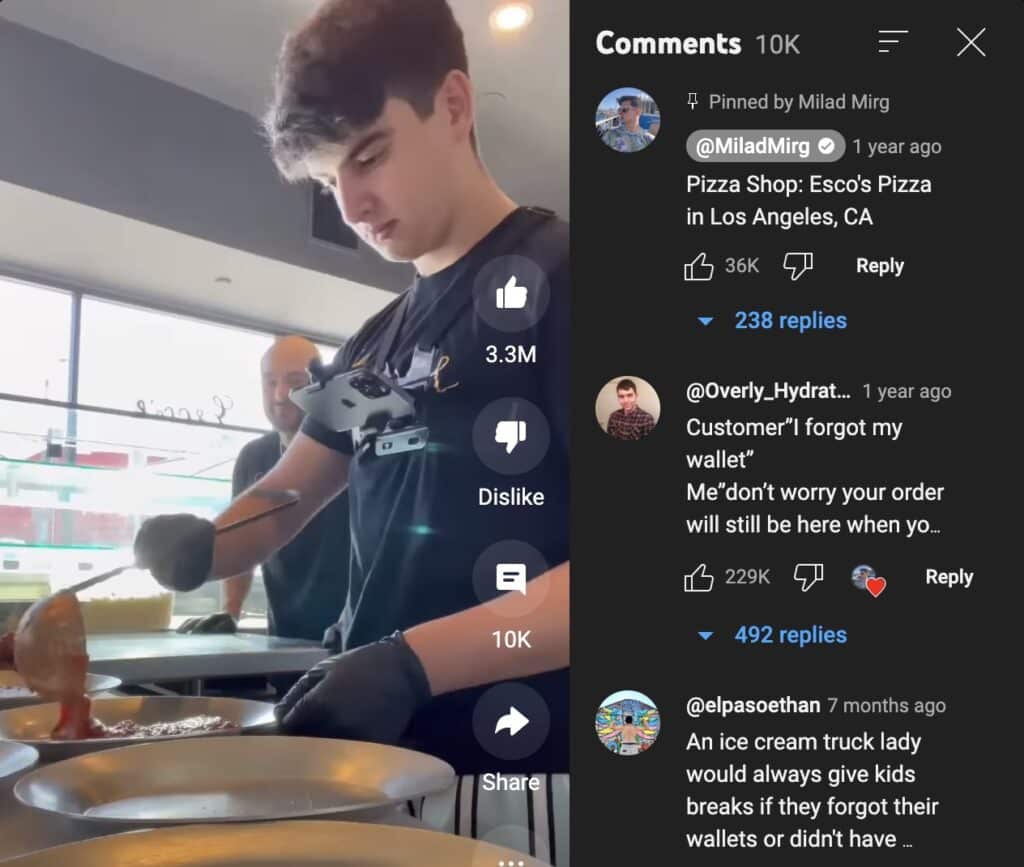Becoming a food influencer is an exciting and potentially lucrative prospect. Research shows that the influencer marketing industry has doubled since 2019.
However, the competition is fierce. How do you cut through the noise and distinguish yourself?
This guide unveils essential strategies to help you carve out your unique niche. While a high-quality blog is fundamental for attracting attention, it’s only the beginning. Standing out involves more – collaboration, networking, and leveraging multiple platforms.
Together, let’s dive into actionable tactics that will not only boost your blog but also elevate your presence in the ever-evolving world of food influencing.
1. Feature as a food influencer in the marketing of other brands
The food industry is highly competitive. This means that restaurateurs, supermarkets, and fast food outlets are all vying to grab the attention of their target market. To get noticed, these brands rely on the creation of fresh content. This is where food influencer marketing comes into play as part of a holistic digital marketing strategy for your food brand.
As you aim to grow as a food influencer, teaming up with places like restaurants and supermarkets is key. Start small, partnering with smaller brands and working your way up. Not only will you get paid to work with these companies, but you’ll also slowly become a recognizable face in the scene, making it more desirable for such entities to work with you.
Milad Mirg is an excellent example of an influencer who does this well. His main channels are YouTube and TikTok, and he regularly posts content of himself working at various restaurants in order to increase their exposure while growing his brand.

2. Collaborate with other influencers
Collaborating with fellow food influencers offers a wealth of benefits for your brand, such as:
- Expanded reach: Partnering with influencers exposes your content to their followers, tapping into new audiences who might not have discovered your blog otherwise. This broader exposure increases visibility and engagement.
- Diverse expertise: Each influencer brings unique skills and perspectives to the table. Collaborating allows you to leverage their expertise, enhancing the quality and variety of content you offer.
- Campaign synergy: Working with influencers whose values align with your brand ensures campaign consistency. This synergy resonates with audiences, fostering trust and authenticity.
Of course, there are thousands of food influencers you could connect with, but not all of them will be the right people to partner with. Here are a few factors to consider when deciding whom to collaborate with:
- Alignment of values: Look for influencers whose values and content align closely with yours. A shared ethos ensures that your collaboration feels organic and genuine to your audience.
- Engagement and audience fit: Consider influencers with an engaged audience that aligns with your target demographic. Quality engagement often outweighs follower count.
- Track record: Review past collaborations and assess their impact. Seek influencers with a proven track record of successful partnerships and a positive reputation within the industry.
- Mutual benefit: Collaboration should offer value to both parties. Ensure a fair exchange, whether it’s through mutual promotion, sharing resources, or co-creating content.
SortedFood is an example of a successful YouTube channel that is well-known for releasing food content in collaboration with fellow food influencers, such as Poppy Cooks, who is one of their regular guests.

3. Create and maintain a high-quality blog
Having a food blog is an essential part of any food influencer’s toolkit. Depending on how you want to build your brand, your blog could be your main focus or an adjacent platform that you use alongside YouTube and social media channels. In any case, we’d recommend regularly populating your blog with fresh food content for the following reasons:
- A successful blog will rank in search results, meaning that you’ll have a steady stream of traffic going to your website. There are various ways you can bolster your blog’s SEO, such as incorporating relevant keywords into your recipes, captions, descriptions, and bios.
- The blog platform lends itself to the various collaboration possibilities we discussed earlier. For example, if you collaborate with a supermarket, then you could use various ingredients that are stocked there to publish a series of recipes.
- A blog is a great way to showcase your legitimacy, especially if you plan on creating recipe content or writing engaging food reviews or recipe descriptions. This highlights that you know your way around the kitchen and are not just someone paid to advertise products.
For most food bloggers, WordPress is by far the easiest platform to get started with. Designing your site and creating pages is extremely intuitive, and any functionality that your site needs can be added through a reputable WordPress plugin.
WP Recipe Maker is an indispensable tool created for food bloggers that allows them to publish recipes on their website. Here are a few things you can achieve with this plugin by your side:
- Create professional recipe cards using highly customizable and mobile-friendly templates.
- Boost your blog’s SEO thanks to the plugin’s automatic handling of recipe metadata.
- Create recipe round-up sections to create various points through which readers can land on your recipes.
- Allow readers to see the exact measurements and amounts they need thanks to the adjustable serving sizes features.
- Make it easy for readers to track their calorie intake and macros thanks to nutrition information calculation.
Below is an aesthetically pleasing example of a recipe card by WP Recipe Maker user Lil’ Luna.

WP Recipe Maker won’t just make your recipes look good – it can also help you earn money! Its handy features for monetizing your blog include built-in spaces for advertisements and the ability to affiliate links, as shown below in this example by This Old Gal.

4. Leverage social media platforms to expand your reach
Before you dive into the world of social media, you first need to ensure you pick the right platform. To do this, you need to understand who your target audience is.
Who are you hoping to reach?
This really matters, so you need to take your time to pick the best platform. Looking at social media demographics really helps with this. Millennials tend to use Facebook the most, while Gen Z are more active on Instagram and TikTok.
With 2 billion active users on the platform each month, Instagram is an ideal platform for expanding your reach. The visual nature of Instagram makes it well-suited to food influencers. Through the use of reels, stories, and hashtags, there’s loads of potential to expand your social media following.
TikTok
TikTok is extremely popular with food influencers. You’ll find a host of food-related content on TikTok, thanks to how easy it is to upload live demo videos and host question-and-answer sessions. TikTok star @justine_snacks is a perfect example of a successful food influencer on this social platform.

YouTube
TikTok content is highly visual, and it favors short-form content. If you want to create more in-depth videos featuring your recipes, YouTube is a great choice. You’ll be able to provide full step-by-step recipe instructions to guide your followers. However, you’ll also be able to try your luck with short-form content via YouTube Shorts.
Maintaining a loyal audience base as you expand
As your aim is to grow your audience and attract new followers, it will be essential to make sure to use your platforms in an interactive way. Responding to your followers and giving them opportunities to speak to you is important, as your fans will be more likely to follow you on your influencer journey if they feel seen by you. Here are a few best practices:
- Be responsive to messages and comments to engage with your followers.
- Encourage active participation by hosting Q&A sessions, polls, and live content.
- Acknowledge audience feedback and show an interest in their opinions.
- Share content generated by your audience and give them credit for it to foster a sense of connection and community.
- Analyze data to see which types of content your audience prefers and engages with the most.
Increase your food influencer following with our guide
Becoming a successful food influencer is far from easy, but by following the tips in our article, you’ll be closer to success! As we’ve discussed, there are various strategies that you should consider implementing:
- Create high-quality, engaging blog content that attracts a steady flow of traffic.
- Effectively use social media to reach your target audience.
- Participate in influencer marketing with other brands to raise your profile.
- Collaborate with other influencers as a mutually beneficial way to expand your audience and grow your following.
All of these strategies are extremely important, but having a food blog is especially crucial as it’s a source of generating traffic and income!
WP Recipe Maker has played a crucial role in the success of many WordPress food blogs – check out the WP Recipe Maker plugin for yourself to discover how it can help your blog thrive!






